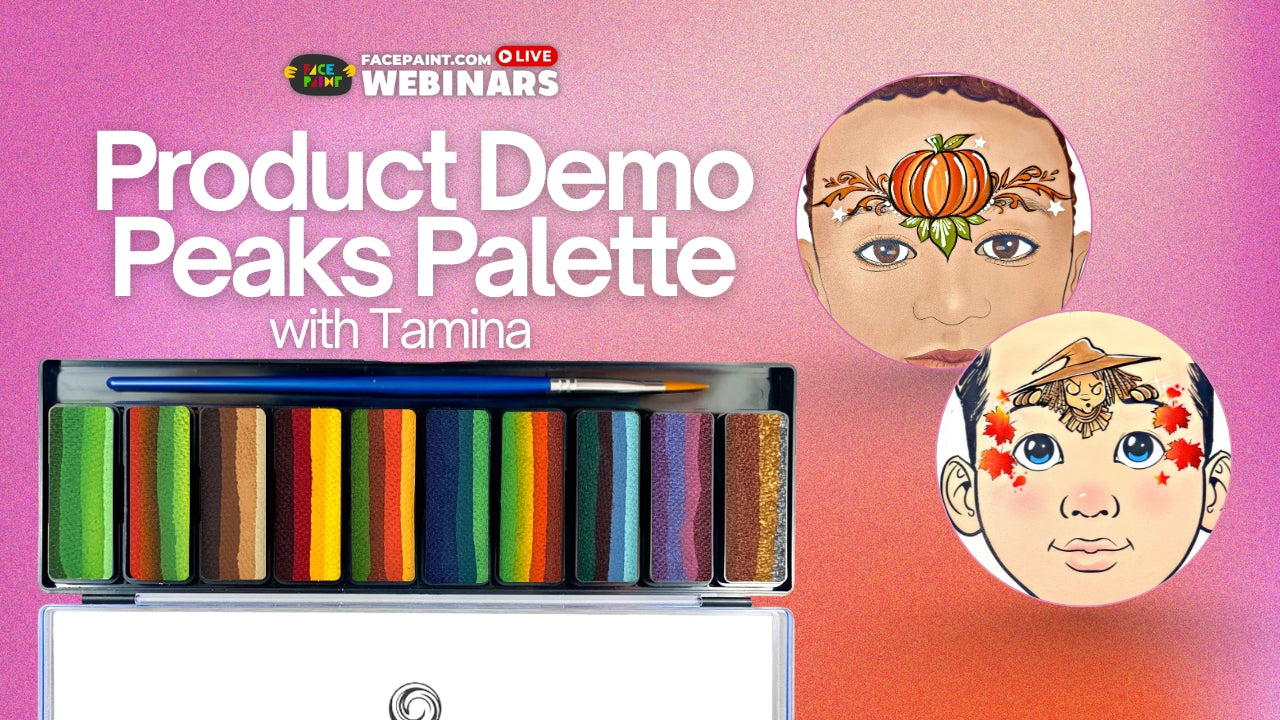When artists aren't subject to external regulations for cleaning our brushes, it's extra important that they self-regulate to make sure their brushes and equipment are clean and hygienic during and after events. I hope this video will help you to thoughtfully set up a system which allows you to thoroughly clean your brushes, even while you work.
How to Clean Face Paint Brushes
For an event, I usually have three water bowls. In the first bowl, I add Brush Bathso that it creates soapy water, which helps me clean my brushes.
My second water bowl is for risning my brushes after I've cleaned them with soap, and then my third bowl is just straight water.
I don't have a lot of water in any of these, primarily because I would never want to spill anything inside a client's home. So I try to minimize that by keeping my water levels low.
And of course that means there is not a lot of soapy water here to clean with. So I change my water out a couple of times during the event, depending on the length of the event. The longer the event, the more times I will change my water out.
There are a lot of different things you can do when it comes to cleaning your brushes. I use Brush Bath because it is an organic cleaner, a water sanitizer, and a makeup remover. Something that I do for deep cleaning my brushes, I'll use rubbing alcohol. For airbrush designs, I'll use 91% rubbing alcohol, and for regular designs, I'll use 70% rubbing alcohol.
The only thing about rubbing alcohol is that it can take a toll on your brushes after a while, so you may have to replace them after some time.
Another thing people in the United States use is hot vinegar, while others like to use wipes that are anti-bacterial.
Whatever you do, make sure you choose something that thoroughly cleans and rinses your brushes!
Some Final Tips:
• As a deep-cleaner, I use rubbing alcohol to disinfect my brushes.
• Well-known artist Lilly Walters Schermerhorn suggests using hot vinegar and disinfectant wipes for assisting in keeping brushes clean, so this is an option for you as well as the Brush Bath.
• It's important to check locally for any rules or regulations required for face painting in your area. While common sense dictates that the cleaner face painters can keep their kits, the better, in some countries, the regulations for what you must use to clean your brushes and how and when this needs to be done are different than they are in the United States.
• In addition to the wide array of brushes and face paint available at Facepaint.com, they carry cleaners such as Brush Bath (in spray and pour form) to make it easier to keep your brushes clean as you work.
Beth MacKinney is the owner of and primary face painter for Face Paint Pizzazz in Elgin, Illinois, and her artwork has appeared in The Colored Palette and SkinMarkz magazines. She services the western and northwestern Chicago suburbs, Chicago’s north side, and the eastern and southeastern suburbs of Rockford. Stop by FacePaint.com to enjoy more of Beth’s face painting tutorials.
 FREE SHIPPING FOR USA ORDERS OVER $100
FREE SHIPPING FOR USA ORDERS OVER $100









Linda
March 28, 2018
This video was super helpful,I had no idea there were regulations when it comes to face painting. I will definitely be ordering the brush bath for all of my events.